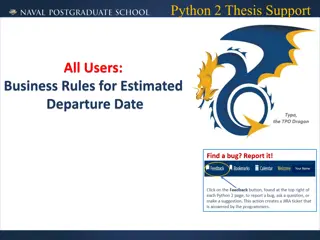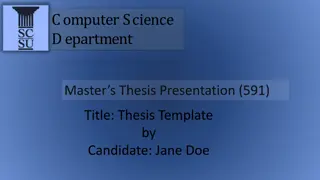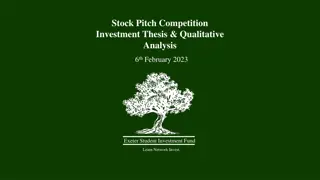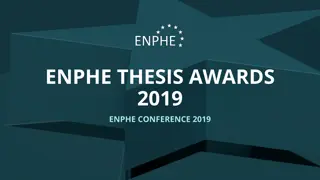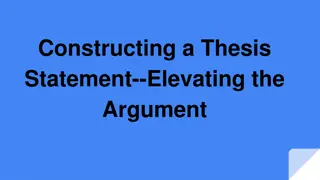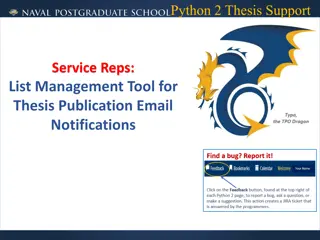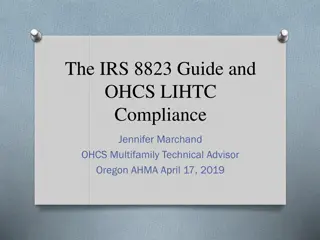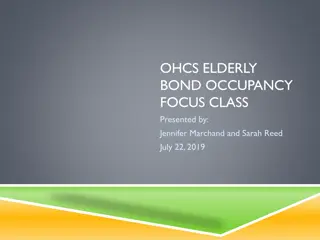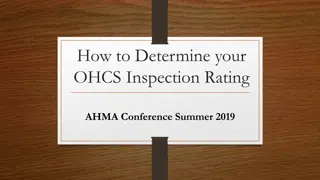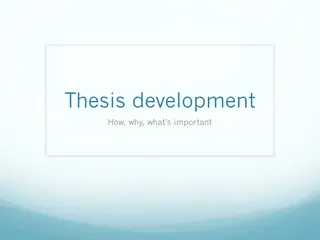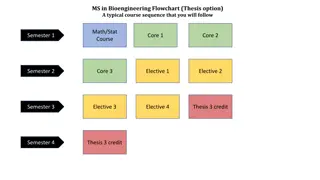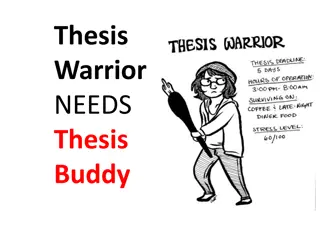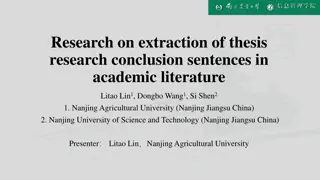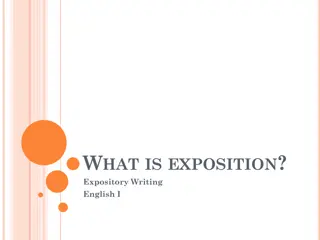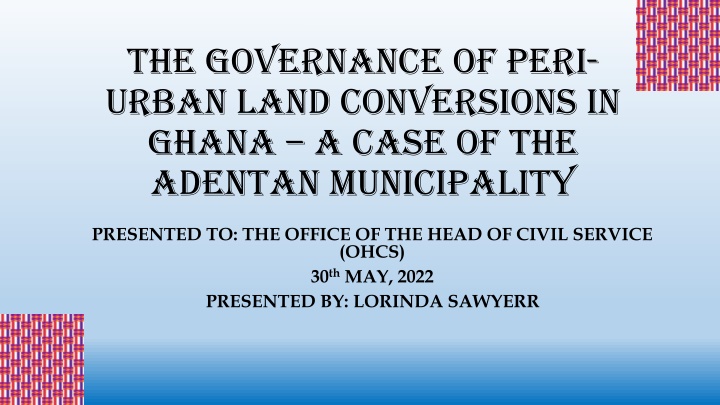
Governance of Peri-Urban Land Conversions in Ghana: A Case Study of Adentan Municipality
Explore the governance of peri-urban land conversions in Ghana through the case study of Adentan Municipality. This research aims to understand the implications of urbanization on peri-urban dwellers and the involvement of traditional authorities in land conversion practices. Analyzing urban governance using the DED analytical framework sheds light on issues of decentralization, entrepreneurialism, and democratization in the context of land use and development.
Download Presentation

Please find below an Image/Link to download the presentation.
The content on the website is provided AS IS for your information and personal use only. It may not be sold, licensed, or shared on other websites without obtaining consent from the author. If you encounter any issues during the download, it is possible that the publisher has removed the file from their server.
You are allowed to download the files provided on this website for personal or commercial use, subject to the condition that they are used lawfully. All files are the property of their respective owners.
The content on the website is provided AS IS for your information and personal use only. It may not be sold, licensed, or shared on other websites without obtaining consent from the author.
E N D
Presentation Transcript
THE GOVERNANCE OF PERI- URBAN LAND CONVERSIONS IN GHANA A CASE OF THE ADENTAN MUNICIPALITY PRESENTED TO: THE OFFICE OF THE HEAD OF CIVIL SERVICE (OHCS) 30thMAY, 2022 PRESENTED BY: LORINDA SAWYERR
TABLE OF CONTENT Background Introduction Problem statement & research objective DED analytical framework Research gap and research questions Methodology Results and findings Conclusion Recommendations Practical Implications
Background Ghana is over 50% urbanized (Ghana Statistical Service, 2014) - a perfect reflection of the global and African Ghana Urban vs Rural population from 1955 - 2020 urbanization. 35 Millions The rapid growth in urban population is not only evident in 30 25 Urban Population the major cities of Accra and Kumasi but also in secondary 20 15 cities. 10 Ghanaian cities are expanding with many experiencing 5 0 urban sprawl Rural Urban Studies have shown that all the fastest growing districts lie within the peripheries of the city of Accra (Akubia and Bruns, 2019)
Research Objective Research Problem This research has been set up as an explorative As cities in Ghana are expanding in the face of the fast (qualitative) research to help understand the urbanisation, peri-urban dwellers lives do not seem to governance in place in the conversion of peri-urban be improving lands around the growing city of Accra Communities seem to have been made worse off while This is done with emphasis on the extent of the their surrounding areas seem to have be booming in involvement of the peri-urban dwellers within the development case study area of Adentan Municipality by adopting the urban governance as Traditional authorities also seem to be enjoying the Decentralisation, Entrepreneurialism and benefit of land sales to the detriment of the entire land Democratisation (DED) analytical framework of owning community Franklin Obeng Odoom. For this reason, it is essential to find out why the situation is so, hence the need for this research.
DED Analytical Framework for Urban Governance Franklin Obeng-Odoom s urban governance as DED (decentralization, entrepreneurialism and democratization) has been adopted for this research In Obeng-Odoom (2012) urban governance in Africa should be analyzed in three stages; a. sketch the nature of the urban governance in practice in order to account for the context-specific issues. b. ascertain the consequences of urban governance in terms of improved quality of life. c. assess how citizens respond the consequences of urban governance.
Identified Research Gap & Research Questions Research Gap Research Questions Not much research has been done into the land governance in To achieve the objective of understanding peri-urban land peri-urban areas and those that exist concentrate on the various governance in the Adentan Municipality, the following are actors and their roles (Nuhu 2018, Resnick 2014) research questions that have been posed to guide this research; The Decentralisation, Entrepreneurialism and Democratisation To what extent are peri-urban dwellers involved in the (DED) framework has so far been used in analyzing urban governance of peri-urban land conversions? problems Obeng-Odoom (2013), spatial planning (Fuseini, 2016) What are the consequences of the governance process of these and market redevelopment (Asante 2020; Asante and Helbrecht, land conversions for the local residents of peri-urban areas in 2019) but not in peri-urban development studies. Accra? What strategies are the local residents of peri-urban areas in Accra adopting in response to the consequences of peri-urban land conversions, and its significance for changing governance of peri-urban development?
Methodology Preliminary search of secondary data on peri- urbanisation Review of general literature on urban & peri-urban issues Specific review of literature on issues of peri-urbanisation in Ghana and the DED analytical framework Further literature review 10 Municipal Assembly 10 Traditional Authority 30 Peri-Urban Dwellers Questionnaire preparation and field data collection Identifying the issues from the responses Coding of responses Further classifying into broader issues Thematic classification of responses Results and Findings Data Analysis Scope and Process
Results and Findings Background of respondents Expected responses 50, received responses 48 responses. This represents a response rate therefore was 96%. EDUCATIONAL LEVEL OF RESPONDENTS Gender Distribution of respondents Tertiary Secondary Primary 17 40 35 35 30 10 25 8 20 15 5 4 10 13 2 2 5 0 PERI URBAN DWELLERS TRADITIONAL AUTHORITY MUNICIPAL ASSEMBLY Male Female Age No. of Respondents Percentage (%) Below 20 years 1 2.1 20-29 years 7 14.6 30-39 years 10 20.8 40-49 years 17 35.4 50 years and more 13 27.1 Total 48 100
Nature of Peri-Urban Land Governance Level of involvement of actors in peri-urban land conversions Responses from Municipal Assembly No Involvement Low Involvement Moderate Involvement High Involvement Actor Total Chief 20% 80% 100% Elders Municipal Assembly Community Members 30% 70% 100% Responses from Traditional Authority 100% 100% Level of involvement of actors on a scale of 1-10 30% 70% 100% Others 80% 20% 100% Chief 10 8 6 Responses show very high involvement of Municipal Assembly Moderate involvement by of the chief Very low involvement of community members and others 4 Others Elders 2 0 Community members Municipal Assembly
Level of involvement of actors in peri-urban land conversions Peri-urban residents' perspective of their level of involvement Peri-urban residents' perspective of their level of involvement 14 12 10 5 8 6 4 7 6 6 5 2 1 0 Below 20 years 20-29 years 30-39 years 40-49 years 50 years and over No involvement Low involvement Some suggested reasons the peri-urban residents gave for their non-involvement were; Those in charge think we are not qualified and have nothing to offer It is perceived that the involvement of the chief means we are also involved Those in charge do not care about us All peri-urban respondents also made it known that there was no Civil Society involvement in land conversions 100%
Responses from Municipal Assembly for Land uses for development plans Land uses for development plans 10 10 9 7 6 2 2 2 1 Green zones Recreation Religious installation Residential Commercial Light industrial Agricultural Services Educational areas It was found that there was no policy on the percentages for land uses on the development plans but what pertains currently is 70% for residential uses, 20% for commercial uses and 10% for other uses This shows that the need of land for agricultural purposes are not considered much 6 of the Municipal Assembly s respondent made statements that the traditional authority sometimes ignore plans and grant leases to people for residential purposes in areas meant for the other uses. Thus tends to increase the land use percentage for residential purposes and worsens the plight of the peri-urban dwellers
Consequences of Peri-urban Land Governance Benefits of land conversions to the Municipal Benefits of land conversions to the Municipal Assembly Assembly Benefit of land conversion to the peri-urban community Availablity of services 13% 6 5 Monetary benefits - 12% 4 Physical Development of the Area - 50% 3 2 1 Appreciation of land value - 25% 0 Permit Fees Development fees The traditional authority respondents gave diverse responses as These benefits together with other Municipal funds are used to to how the monetary benefit was apportioned provide infrastructure and other services to the peri-urban Chief and his elders take all 3 respondents Shared between the traditional council and the community 3 respondents Shared among the chiefs, the community and the Municipal Assembly 2 respondents areas. In spite of these benefits, 70% of the Municipal Assembly s respondents stated that the predominant effect of the non involvement of the community members in the land conversion is that the implementation of the planning scheme becomes 80% of the peri-urban dwellers said all the money went to the difficult. chief while 20% said the money goes to the chief and the elders
Consequences of land conversions on livelihoods of residents Predominant occupation of residents Opinion of the indigenous peri-urban dwellers on the effect of their non- involvement in land conversions Predominant occupation of peri- urban dwellers EFFECT OF NON-INVOLVEMENT OF COMMUNITY IN LAND CONVERSIONS 35 83% 30 29 25 20 19 15 10 9 5 17% 1 2 0 Agriculture Trading Construction Other Loss of agricultural livelihood Non-peaceful development for incoming urban residents Post- Land Conversions Pre-Land Conversions 4 out of the 5 respondents who answered that the effect is seen in Residents resorted to other means of livelihoods like trading the non-peaceful development for urban residents were people and working in growing construction industry in their with tertiary education. community. 24 out of 25 of the respondents who stated the effect of their non- Another finding the buttresses this assertion was that, most of involvement was loss of agricultural livelihood had lower educational qualification. the respondents over 50 years stated they were unemployed but they were quick to add that they used to be farmers 8 respondents out of 12.
Consequences on income levels of peri-urban dwellers Consequences on community life Monthly incomes of peri-urban residents pre and post land conversions Effect of land conversion on community life 60.00% YOUTH INVOLVED IN SOCIAL VICES 18 50.00% 40.00% RELOCATION OF COMMUNITY MEMBERS 0 30.00% 20.00% LOSS OF COMMUNITY HERITAGE 2 10.00% 0.00% GH 500 and below GH 600 -GH 1000 GH 1100-GH 1500 GH 1600 and above LOSS OF COMMUNITY IDENTITY 10 Percentage of respondents before land conversions Percenatage of respondents after land conversions 0 2 4 6 8 10 12 14 16 18 20 Income of residents generally improved with the on-going land conversions. Further analysis show that majority of respondents who opted for the effect This was attributed to jobs they got in trading and construction which fetches them being the youth getting involved in social vices were over 50 years and above better income. On the other hand, all respondents between the ages of 20-39 years, opted for 6 respondents had their incomes staying within the GH 500 and below bracket. loss of community identity where they see a lot of segregation as a result of these respondents were over the ages of 50 years. the on-going land conversions. 5 respondents had no change in income. This goes to show that different age groups see the effect of land conversions These respondents had tertiary education levels and were working outside the on community life differently. community hence, their jobs and incomes were not affected.
Strategies that Strategies that peri peri- -urban dwellers use urban dwellers use STRATEGIES USED BY RESIDENTS Strategies used by peri-urban dwellers from the traditional authority's point of view Do nothing 4 Other 13% Protest/demonstrate 37% Petition a public figure 3 Petition a public figure 13% Avoid communal activities 11 Demonstrate/protest 7 Report to the media 5 Do nothing 25% Involve the media 12% 0 2 4 6 8 10 12 The means used by most residents was to avoid communal activities All respondents who resorted to the use of media had tertiary education All respondents who resorted to petitioning public figures were females over 50 years All respondents who used protests and demonstration were youth between 20-49years The differences show that different age groups and educational qualifications resorted to different strategies
Conclusion Good governance is said to include; decentralisation, improving civil rights and minimising inequities in societies. All these were not seen to be at play in peri-urban land conversions in the Adentan Municipality Findings showed clearly that there was no civil society involvement in peri- urban land governance in the Adentan Municipality.
Conclusion Also inequality in peri-urban land governance in the Adentan Municipality can be seen in; how the local peri-urban dwellers are minimally involved in the land conversions and even when they are involved it is the elderly males and not the other groups of residents. the allocation of land uses where more land is allocated to residential and commercial uses against other uses including agricultural uses which is the main livelihood of these indigenous peri-urban dwellers. the sharing of monetary benefits from land sales, majority of which goes to the chief and his elders.
Conclusion Shortfalls in the peri-urban land governance have brought untoward hardships to the indigenous peri-urban dweller including; Loss of livelihoods Loss of communal life The upsurge of social vices among the youth. Increased living costs even though incomes have also increased There was also a rippling effect on the work and revenue of the Municipal Assembly, where revenues were lost due to certain actions from the youth. There is therefore the need for an all inclusive governance system in peri-urban land conversions in the city of Accra.
Recommendations To help achieve good governance is peri-urban land management, this research recommended the following; Firstly, there should be more inclusion of other The second is that a Thirdly, there should be actors in peri-urban land policy on land use plans the use of the monetary governance women, should be developed for gains from land sales for youth and civil society and use by Municipal development of the not only elderly men in the Planners. indigenous community. community.
PRACTICAL IMPLICATIONS My studies in theories of new town development and other related Firstly, competency in the use of the Geographic Information System (GIS) software known as ArcGIS in solving daily spatial problems most of which are land related. The OASL undertaking a rollout of an APP as part of its digitalisation process. This App relies on spatial data and I believe my knowledge will really help in the digitalisation especially with collection and report analysis. I have gained subjects have built my knowledge Again, I have gained knowledge on how Ghana as a developing in data analysis for research country can develop new towns writing and policy development. which will suit the needs of the is currently As part of our activities, the people. OASL undertakes research into One area worthy of mention is the stool land issues and I believe way public participation can be my knowledge is this area will undertaken and how land activities the help in such studies. adjustment can be done especially data in already built up areas of urban areas.
THANK YOU FOR YOUR ATTENTION


